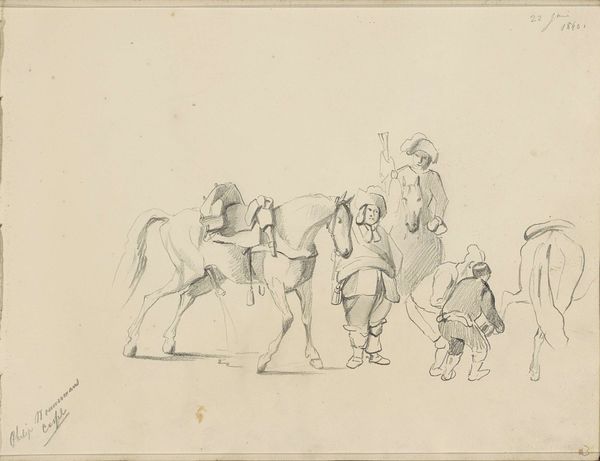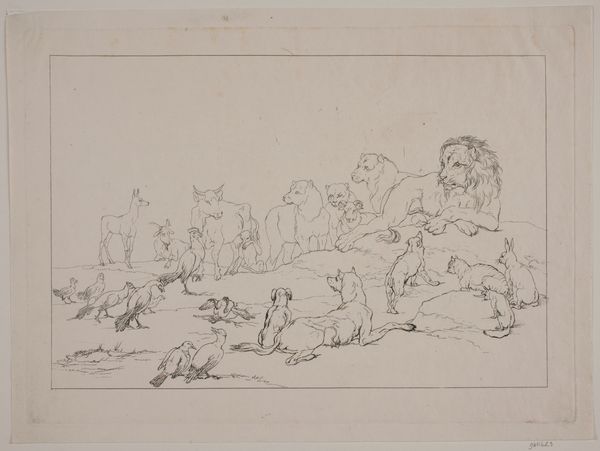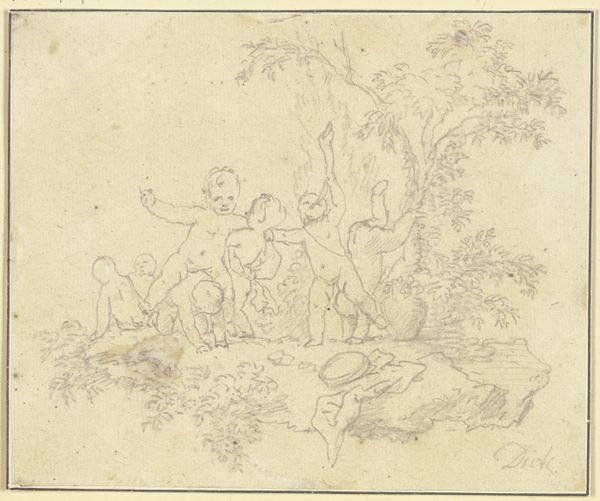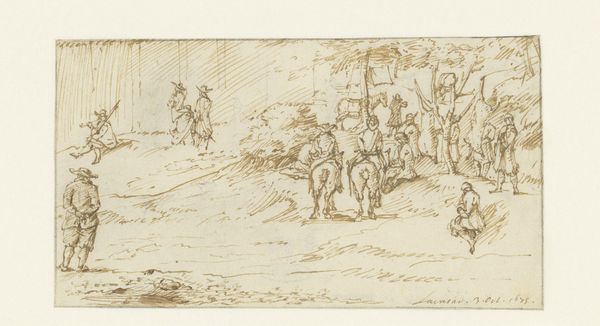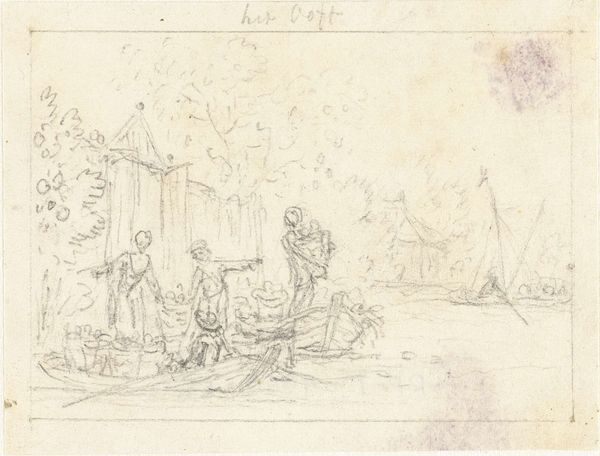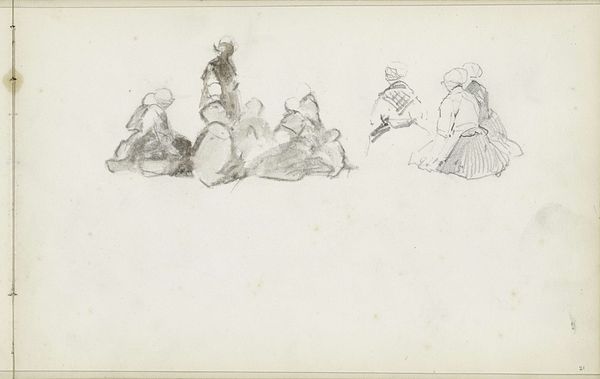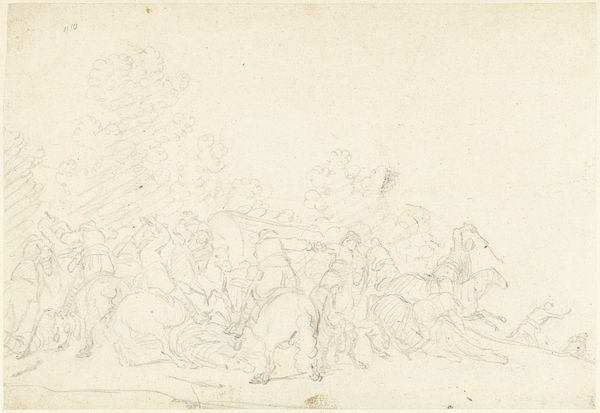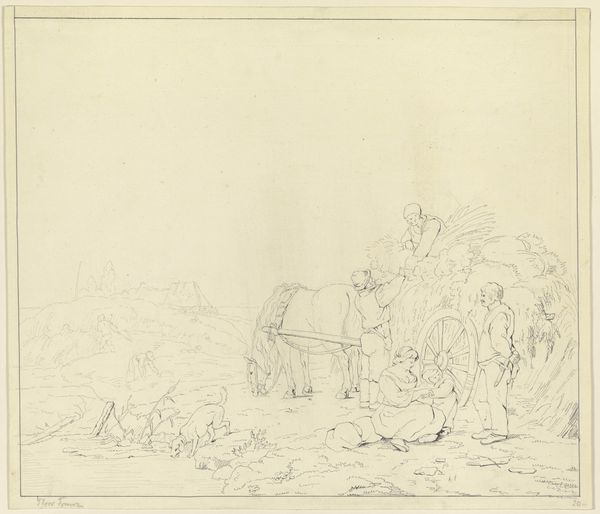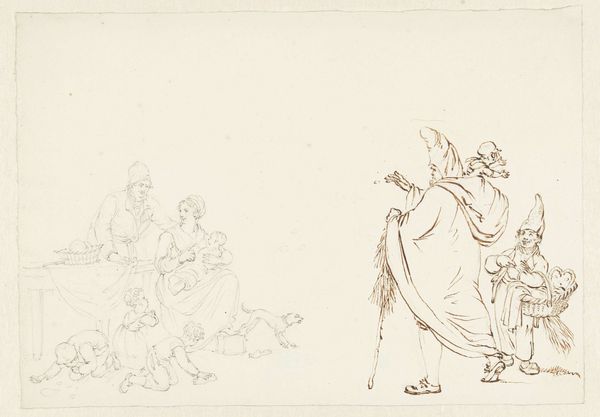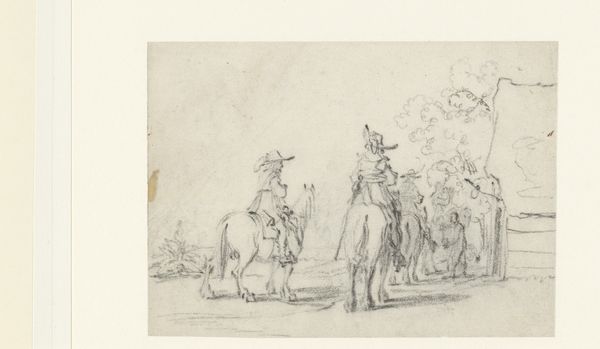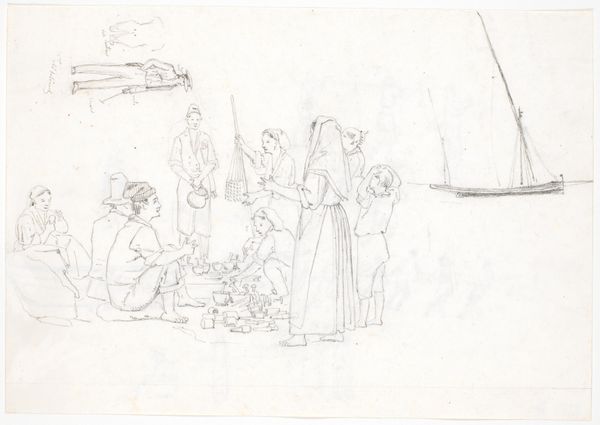
drawing, ink, pencil
#
drawing
#
ink drawing
#
ink
#
group-portraits
#
pencil
#
genre-painting
#
academic-art
#
realism
Copyright: Public Domain
Curator: What a charming scene. We’re looking at "Spielende Kinder, Sträußchen bindend," or "Children Playing, Tying Bouquets," created in 1846 by Marie Ellenrieder. It's an ink and pencil drawing. Editor: It has a lovely, ethereal quality. The soft blue lines give it a sense of lightness. It reminds me of illustrations in old fairy tales. How was something like this consumed? Curator: That’s an interesting angle. Ellenrieder moved in circles interested in creating new visual cultures informed by religious sentiment and Romantic notions of childhood innocence. She had converted to Catholicism, which may explain some of her stylistic inspiration as a painter from the older Italian Renaissance masters such as Raphael and Perugino. We know she became a court painter to the Duchess of Leuchtenberg, so something like this could have circulated among the upper classes. Editor: Court painter! That's fascinating in terms of labor and patronage. But consider, too, the symbolism embedded within this idealized image of childhood. Flowers being made into bouquets were significant at the time. Curator: Ah, yes. Bouquets and flowers often represented virginity, chastity and love, so to see these symbols of femininity and virtue being created by children really emphasizes ideas surrounding gender. The artist probably saw herself helping in a sense, making similar representations to encourage these behaviors. Editor: The composition seems carefully staged. Do you see any other political considerations that could inform such imagery at this time? What do we know of who these girls were and their social location? Were such idealized images a social requirement of court portraiture, in a time of political instability? Curator: Well, unfortunately, records about the subjects themselves are sparse. What strikes me as odd in terms of material process is her choice to draw. Though she was mainly an oil painter, she returned regularly to printmaking and drawing. She became closely connected to a printmaking workshop, so she could reproduce images like this as a sort of artistic business in this region. I imagine that this study was maybe made in preparation for an oil painting. Editor: An artistic business is correct. We have to think about not only the production but its intended effect for a buying public. This makes it much easier to understand in terms of audience. Well, looking at this image again, my appreciation has deepened thanks to that glimpse into the processes and political landscape around this artwork. Curator: Indeed, recognizing her professional drive, beyond simply artistic talent, grants further appreciation for the image. It invites us to think more fully about this intersection between the individual, work, and society.
Comments
No comments
Be the first to comment and join the conversation on the ultimate creative platform.
